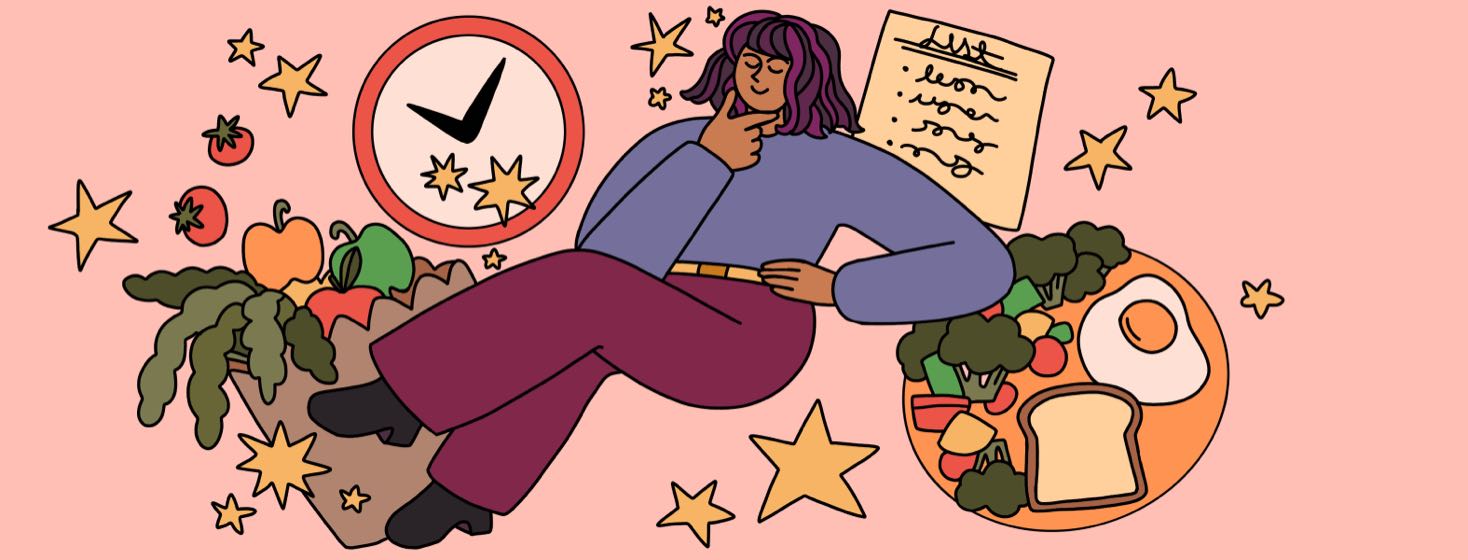Become a Meal Planning Pro!
Meal planning has often been encouraged for busy people or families to prepare a week of nutritious, homemade meals without regular visits to the drive-thru.
Convenience often wins when you're feeling busy or stressed, as the food is hot and ready as soon as you need it. But with the rising costs of eating out and the added sodium and fat often found in restaurant foods, meal planning can save money and be healthier. Let's review the benefits of meal planning and some tips to make it work for you!
Time is of the essence when planning meals
It can often feel like there aren't enough hours in a day to get everything completed. By the time work or school has finished, everyone is tired and hungry. The end of a busy workday is not usually the optimal time to use even more brainpower to develop an intricate recipe. Learning how to grocery shop and stock the cupboards with ingredients that make quick, healthy meals is key!
Make meal planning work for you
Here are 3 simple steps to get you started with building a nutritious meal-planning routine.
Step 1: Make a schedule
The first step is to find a time of the week when you can look at the calendar and decide what is on the agenda for the week. When will meals be eaten away from home? What sounds good to eat this week? Even placing a planned night out to dinner on the calendar can help you see the whole picture. This is also a great time to consider trying new recipes!
Step 2: Shop for ingredients
Next, write a grocery list that corresponds with what is needed for the meals that are to be made this week. Be sure to include not only the main course but side dishes or snacks as well as produce. Breakfast, lunch, and dinner should be considered. If you are not sure how to build a healthy meal, consider the plate method.
Use the plate method
The plate method encourages half of the plate to be covered in nonstarchy vegetables, a quarter of the plate with lean protein, and the remaining quarter with a starch.1
Here are some examples of the plate method at each meal.
Breakfast
- Nonstarchy vegetable: Sliced bell pepper and tomato wedges
- Lean protein: 1 or 2 eggs scrambled
- Starch: 1 piece of whole-grain toast
Lunch
- Nonstarchy vegetable: Spinach salad
- Lean protein: Deli turkey and cheddar cheese
- Starch: 1 whole-grain tortilla with mayonnaise
Dinner
- Nonstarchy vegetable: Steamed or roasted broccoli
- Lean protein: Grilled salmon with lemon
- Starch: Mixed berries
Step 3: Implement your diabetes-friendly meal plan
Now is the time to work your magic! If there are any steps you can do early on in the week to help move things along quickly, go for it!
Say you are planning to use ground meat for 2 meals. Try cooking it once, and then before adding any seasoning or sauce, place half of it in a container for the meal later in the week! Half of your work is already done.
Once you have done this for a few days or weeks, you will find it becomes much more of a regular habit. You will know your favorite and not-so-favorite recipes that won't return to the menu. Type2Diabetes.com is a great resource for meal ideas and recipes! Happy planning!

Join the conversation